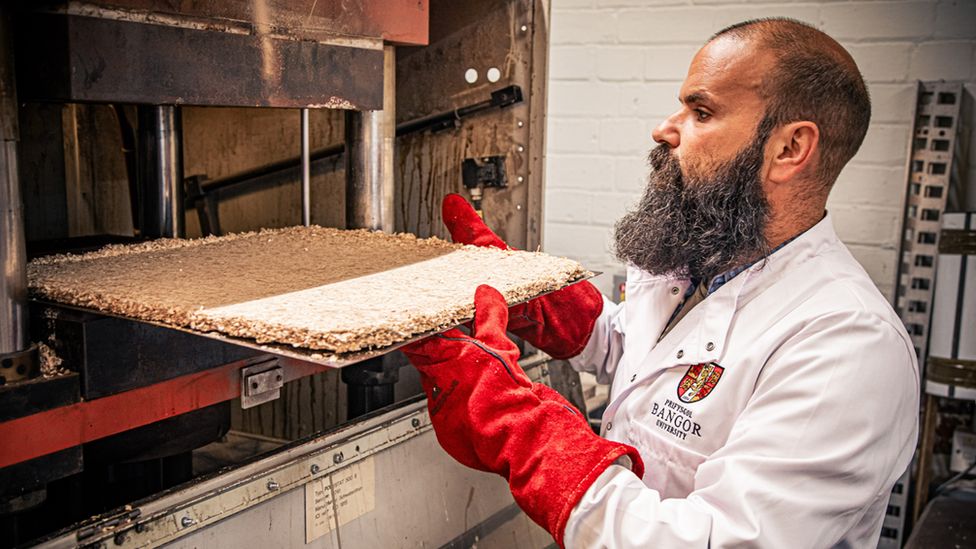Housing: Gwynedd homes to be insulated with sheep's wool
- Published

Thousands of homes in north Wales are to be part of a major drive to use traditional products like wool and slate to make them more energy efficient.
The Ty Gwyrddfai eco-project is hoped to help people keep their houses warm for less as energy costs soar.
It is run by Adra, north Wales' largest housing association, with Grwp Llandrillo Menai and Bangor University.
The hub provides skills training for decarbonisation and retrofitting homes.
An environmental lab at the centre, based in Penygroes near Caernarfon, also tests new products and materials to help with decarbonising homes.
There insulation boards have been made from sheep's wool using a hydraulic press to join fibres and adhesive together.
Dr Simon Curling, one of the scientists at the lab said: "As we get on with climate change how are materials going to cope with that?
"New materials and old materials such as wool - how will [we] use them properly in our housing stock and how will they perform?"
The project has plans for decarbonising Adra homes by 2030, with the use of traditional products like wool and slate to be used for its properties in Gwynedd.
Julie Stokes-Jones, business manager at the hub, said the scheme is unique and an important part of the transition to a more sustainable future.
"These resources will ensure that local businesses in the construction sector are equipped to take advantage of new opportunities resulting from decarbonisation and housing retrofit," she said.
Ty Gwyrddfai will incorporate an environmental lab so that tests can be done on new products and materials to help with decarbonising properties.
The eco-project will be leading a major decarbonisation programme by working with communities and businesses over the next 10 years.
Related Topics
- Published15 May 2023
- Published25 August 2023
- Published23 November 2023